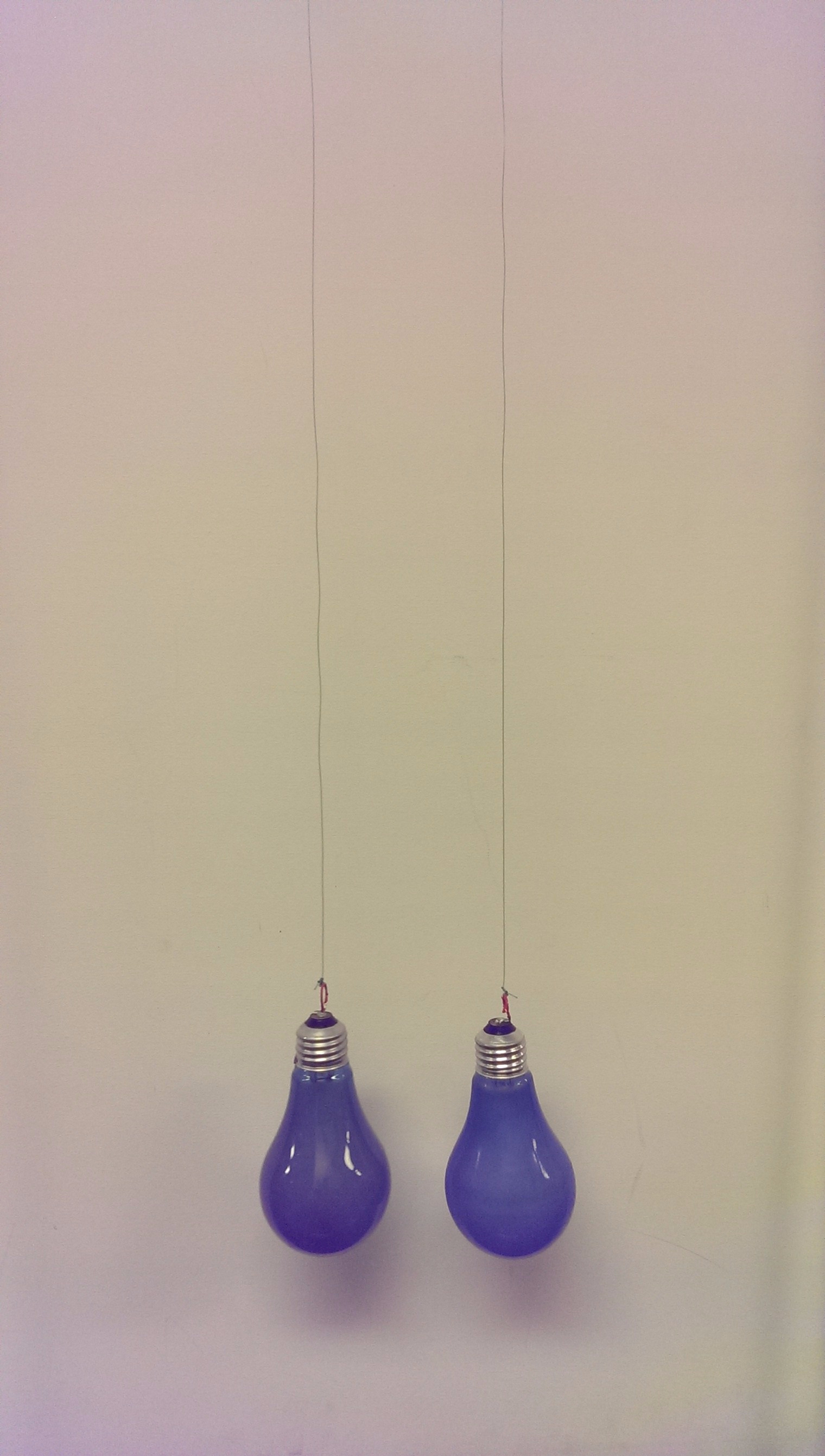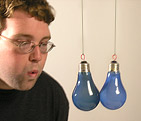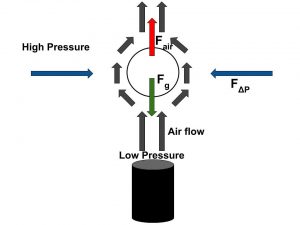
Figure 2 – Two light bulbs hung by thread.
Materials:
- Ping pong ball
- Air blower with a hose attachment
- 2 light bulbs + thread
- Rods + stands
Demonstration:
Ball suspended in an air cushion (Figure 1): Use an air blower with a hose attachment to blow air vertically upright. Place a ping pong ball in the air stream, and the ping pong ball will remain suspended. The angle of the air stream can be carefully varied while still suspending the ball, and the blower intensity can be adjusted to raise or lower the ball position with respect to the flow of air.
Attracting Bernoulli force (Figure 2): Hang the two light bulbs from thread and mount such that they hang 2-3 cm apart from one another. Blow directly between the two light bulbs and observe them come together with a ‘click’ (Figure 3).
Explanation:
Bernoulli’s principle states that the sum of the kinetic and potential energy densities and pressure of a fluid must remain constant at all times,
(1/2)ρv2 + ρgy + P = constant,
where P is pressure, y is the vertical position of fluid, v is its velocity, and ρ its density. The first and second terms in the Bernoulli equation indicate the kinetic and potential energy densities, respectively. The pressure term can seem abstract in comparison to the kinetic and potential energies, but it describes the density of internal energy in the system.
One result of the Bernoulli principle is that higher air velocities will result in lower pressure. In the ping pong ball in air cushion demonstration, the air stream has much lower pressure than the relatively stagnant surrounding air. As a result, Newton’s second law creates a net force from high to low pressure, keeping the ball in place in the stream of air, as seen in Figures 1 and 4.
Similarly, by blowing between the two light bulbs in the attractive forces demonstration, the flow of air creates a lower pressure between the bulbs than the surrounding air, demonstrated in Figure 3. This creates a force from high to low pressure due to Newton’s second law, pushing the bulbs together.
Written by Lydia Seymour.


